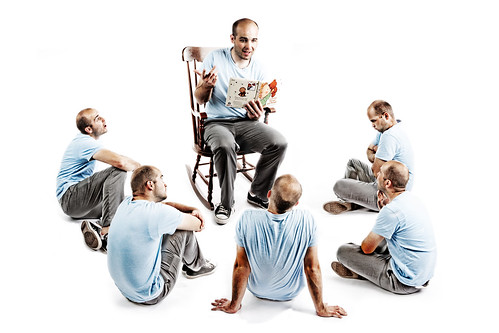Monday saw another excellent post from the Farnham Street blog (well worth following) entitled "The structure of a Story."
To summarise the post, a great story includes Context, Action and Result (where Context includes Where, Who, What do they Want, and What's getting in the way). As the blog says
It all hangs on the central Context, Action, Result (CAR) structure. It starts with the Subject, Treasure, and Obstacle, and concludes with the Right lesson and link back to why it’s being told.We all know that humans naturally learn through story, and that when we transfer Knowledge, story is one of the best formats. That is equally true of lesson-learning as it is of the other elements of KM. Yet all too often, lessons fail to meet the test of a good story.
As the Farnham Street blog says, aspirant storytellers usually start with the Action, because that is the exciting part, and omit the context, and as a result the reader of the story or lesson cannot easily identify with nor internalise the learnings.
When we teach lesson-learning to organisations, we say that Every Lesson is a Story, and we recommend that the lesson has at least 6 components
1) Context. Here we explain what was expected to happen, but didn't. It is amazing how many project teams or facilitators skip this step. Because "what was expected to happen" is so obvious to them, they expect it to be obvious to the reader, but of course it seldom is.
2) Outcome. Here we explain what actually happened - the Action step of the story. What went wrong? What actually happened?
3) Root cause. Here we explain WHY it happened - what the Obstacles were, what was missing that should have been there, or (in a success story) what was done to achieve the result.
4) Impact. Here we explain or try to quantify the result, either negative or positive.
5) Lesson. Based on the root cause, what is the learning for future projects?
6) Action to Embed.What action do we take to embed that lesson into business process, so mistakes are never repeated, and successes always copied.This is also the structure used by Lessons Management Systems such as the Lessons Management Hub. It is no coincidence that this structure corresponds closely with the After Action Review structure.
A lesson with a story-based structure such as this takes about a page to write down or a couple of minutes to tell, compared to typical bullet-point one-liner lessons - told in seconds, forgotten almost as quickly.
However if we treat every lesson as a story, then we realise that it must be presented as a Narrative, with Context, Action and Result, concluding with the Right Lesson.
This is the simple structure that conveys the message.





No comments:
Post a Comment